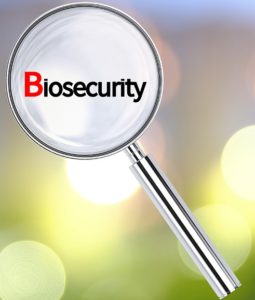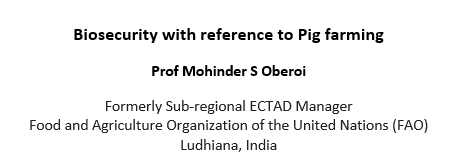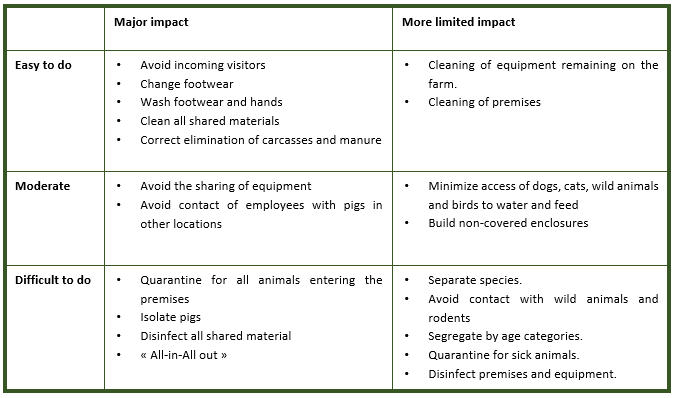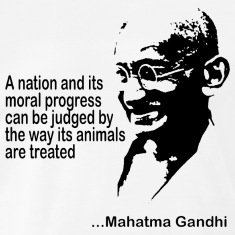 Improved biosecurity across the pork value chain is imperative for the success of the piggery sector in India. Veterinarians play an essential role in motivating, training, and helping people to improve biosecurity at all levels. A practicing field veterinarian is also a gatekeeper of biosecurity protocols both on and between pig farms. The veterinarians should work with the industry level associations to popularize a scientific risk-based scoring system to evaluate the quality of biosecurity. A biosecurity plan is often unique to the local situation. The author Prof Mohinder S Oberoi rightly points out that a strategic bio-security plan recommended by a veterinarian should be affordable, sustainable, effective, and the suggested measures should not disrupt the production cycle.
Improved biosecurity across the pork value chain is imperative for the success of the piggery sector in India. Veterinarians play an essential role in motivating, training, and helping people to improve biosecurity at all levels. A practicing field veterinarian is also a gatekeeper of biosecurity protocols both on and between pig farms. The veterinarians should work with the industry level associations to popularize a scientific risk-based scoring system to evaluate the quality of biosecurity. A biosecurity plan is often unique to the local situation. The author Prof Mohinder S Oberoi rightly points out that a strategic bio-security plan recommended by a veterinarian should be affordable, sustainable, effective, and the suggested measures should not disrupt the production cycle.
We hope to include more biosecurity related resources ( including specific references about other livestock species and poultry) to this page soon. Please contribute article/papers.
Readers are also encouraged to post comments, suggestions, and URL links to appropriate resources.

Biosecurity is viewed as a key component of the animal health system. There is an increasing interest in improving such systems as a global public good – not only to reduce poverty and provide food security but also as a key component to protect human health by improving the systems that will detect and respond to the emerging infectious disease of animals and humans.
The biosecurity procedures are based on principles of disease control viz., find the disease fast, stop it from spreading, and kill it quickly. All these three components have to work hand in hand to effectively control the disease. To prevent the spread of disease, the biosecurity plays an important part.
To define biosecurity, it is the implementation of measures that reduce the risk of the introduction and spread of disease agents. Biosecurity requires the adoption of a set of attitudes and behaviors by people to reduce risk in all activities involving domestic, captive exotic and wild animals and their products.
General principles of biosecurity for all diseases:
- Live animals produce, multiply, and transfer the organisms easily. They are the most dangerous source of pathogens.
- Personnel, vehicles, and equipment transfer some pathogens easily.
- Uncontrollable spread may occur via wind, insects, rodents, wildlife.
Most infectious diseases of animals spread mostly by the actions of PEOPLE; therefore, BIOSECURITY is important to control spread.
There are three principal steps for biosecurity
- Physical Segregation to prevent contamination
- Cleaning to remove contamination
- Disinfection to kill any remaining virus
SEGREGATION: Segregation is the most important and effective step. It is the strongest form of biosecurity and where maximum effort should be placed, if at all possible.
Segregation means keeping potentially infected animals and contaminated objects away from uninfected animals. This requires a barrier, either actual or conceptual. Nothing crosses the barrier unless it has to. The barrier can be physical (fence), temporal (time between visits) or procedural (changing footwear and outer clothes). The perimeter is best marked by a fence, but this is not always possible. However, limiting and controlling access points (lock the gate) may be practiced.
CLEANING: Cleaning is the next most effective step, and if all dirt is removed, there is little left for the virus to be carried by people and other means of transfer.
Cleaning means that the surfaces of the object must be visibly clean with no dirt left that is visible to the eye. Cleaning needs effort by scrubbing brushes for smaller items such as boots and high-pressure washers for bigger items such as vehicles.
Disinfection: Disinfection is important but is the least reliable step of biosecurity. Its effectiveness depends on many factors, in particular the quality of the cleaning process.
It is impossible to disinfect anything that is visibly dirty. We cannot expect disinfectant to come into contact with a microscopic pathogen that is hidden inside even small amounts of other material. Many disinfectants are inactivated by organic material present on the unclean surfaces.
There are many disinfectants capable of inactivating the pathogens. The important elements are that it should be used at the correct concentration and be in contact with the clean surface for long enough to act. Many viruses are inactivated by soap and detergents, so thorough cleaning with soap and water should be effective so long as the detergent is left on the surface. Disinfection can be improved by drying or at least leaving the cleaned and disinfected object overnight to dry itself.
Decontamination is a process of cleaning followed by disinfection. Whereas Effective cleaning removes 90% of contamination, effective disinfection following effective cleaning removes the remaining 10% contamination. On the other hand, ineffective cleaning followed by disinfection would remove less than 90% of contamination.
Applicability of suggested biosecurity measures varies with different situations. The recommendations should be based on its affordability, sustainability, effectiveness, and measures should not cause disruption in the production cycle.
Biosecurity for large scale commercial producers is relatively easy to implement since adequate resources (financial and technical) and well-known protocols for biosecurity are available. It is technically relatively easy to apply the protocols. However, enforcement may be needed.
There are, however, situations like a small commercial, backyard piggery, markets, and intermediaries (service providers) where resources are limited.
The motivation for biosecurity is primarily from the disease control point of view; it is most important to prevent the spread and, in particular, at locations that would spread disease most. However, from the owner’s point of view, biosecurity is important to protect their herds against becoming infected.
People may not carry out biosecurity unless it is enforced. There is a need to find out what motivates people to implement biosecurity. These may include establishing an understanding of biosecurity, assess the perception of the risk from diseases, assess capacity to implement biosecurity, and demonstrate benefits of improved biosecurity. The question most frequently asked by owners is, ‘what’s in it for me?’.
Attributes of biosecurity measures: The main attributes of biosecurity measures are its i) potential effectiveness in reducing the risk of disease, ii) persistence of this effectiveness, iii) speed of implementation, iv) setup cost (including labour/effort), v) recurrent cost (including labour/effort), vi) disruption of the production system, and vii) social and cultural acceptability.
Biosecurity for backyard piggery:
There are several issues related to biosecurity for backyard piggery which include; i) no physical barriers around herds or village, ii) cannot prevent contact with other animals (domestic and wild) within the village, iii) supply of disinfectants unlikely to be possible, iv) difficult to control movements of people (keepers and intermediaries), v) level of risk low, so risk perception is a problem, vi) potential for spread sufficient to maintain disease, and vii) keepers are used to seeing regular animal deaths.
However there are several options also like, i) usually there is a physical separation between villages, ii) cleaning of footwear and other items with soap and water will have a significant impact, iii) common points can be established in villages where animals are bought and sold with good cleaning at that point, and iv) discourage returning with live animals from markets. Though there still remain issues of quarantine and housing under the backyard scenario.

Biosecurity measures for backyard or scavenging pigs
Biosecurity for small scale commercial producers:
The main issues are i) limited resources (time/people/money), ii) high risk because of many movements, and iii) housing may not be purposely built. However still there are good options to implement biosecurity measures under this situation, like i) focus of Segregation first followed by cleaning, ii) establish a barrier of some sort, iii) housing that keeps out other pigs, both domestic and wild, iv) annex at the entrance with dirty and clean side, v) provide a separate set of clothing and boots, vi) control who goes into the house, and vii) if possible, control who comes into the yard.
Biosecurity for intermediaries:
The main issues with multiple intermediaries like traders, sellers, vaccinators, technicians, etc. are that they are always in a hurry. They pose a high risk as they always move from live to live stocks; therefore, it is not easy to set up biosecurity for them. However, some of the options could be enforced like the need for community action/pressure so that they undertake basic biosecurity using thorough cleaning with soap and water. The other options which could be thought of are the possibility of controlling access to villages to a single point. They may also comply if they have a commercial interest in not spreading disease.
Common basic aims of biosecurity for consideration should be that
- No faeces from the pigs of another farm enters your farm
- Major threats for breaks in biosecurity are:
- Live animals
- Faeces on shoes
- Vehicles (including bicycles) entering the farm
Some of the simple, effective, cheap measures include
- Changing shoes before entering in a farm
- Wash shoes and hands
- Stop vehicles driving onto the farm
- Develop detailed strategies with the producers
- Find a motivation that will last
Additional resources:
Resource note for a trainer on cleaning and disinfection
Biosecurity guideline for Piggery ( Ministry of Fisheries, Animal Husbandry and Dairying, Government of India )
Good practices for bio-security in the Pig sector, FAO ( 2010 )
OIE Video:
ASF Webinar for South East Asia: Biosecurity in the backyard and small-scale farms
ASF Webinar for South East Asia: Biosecurity in large commercial pig farms





